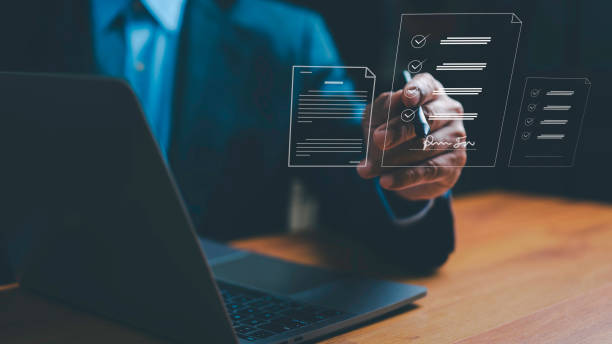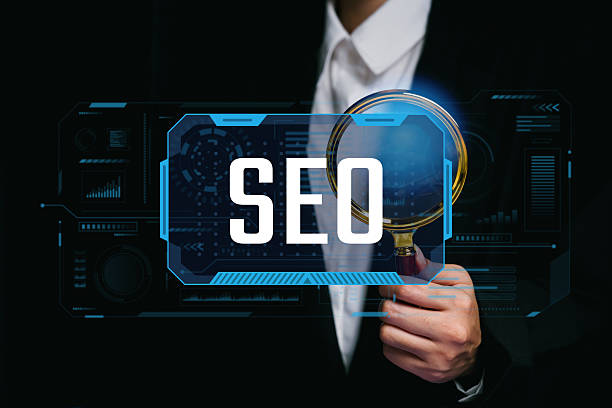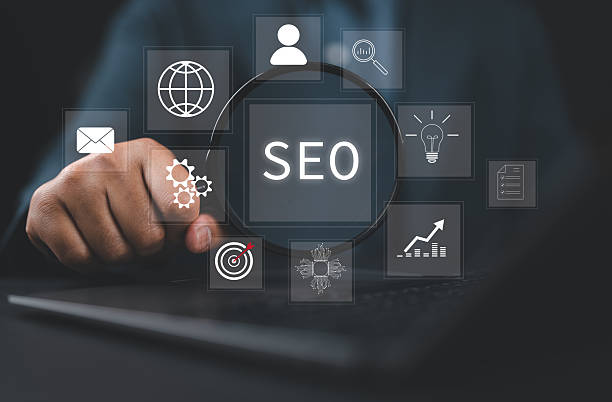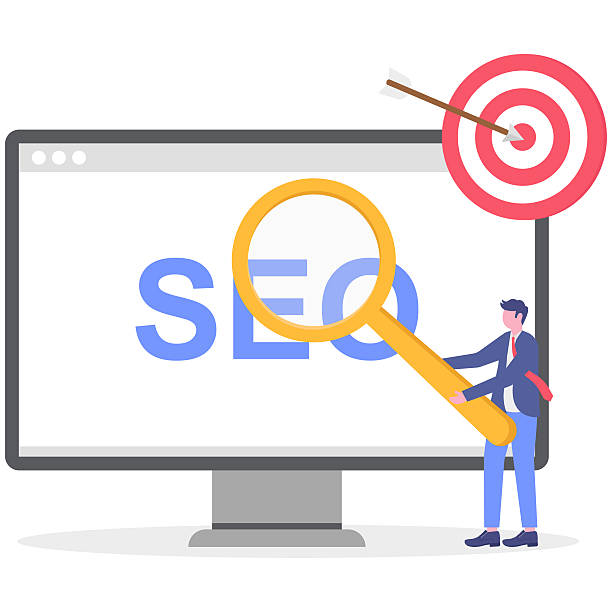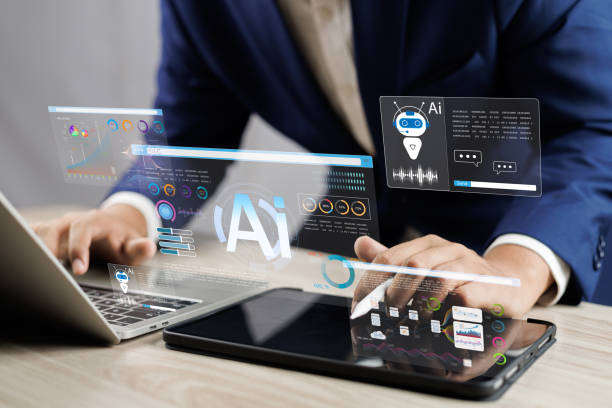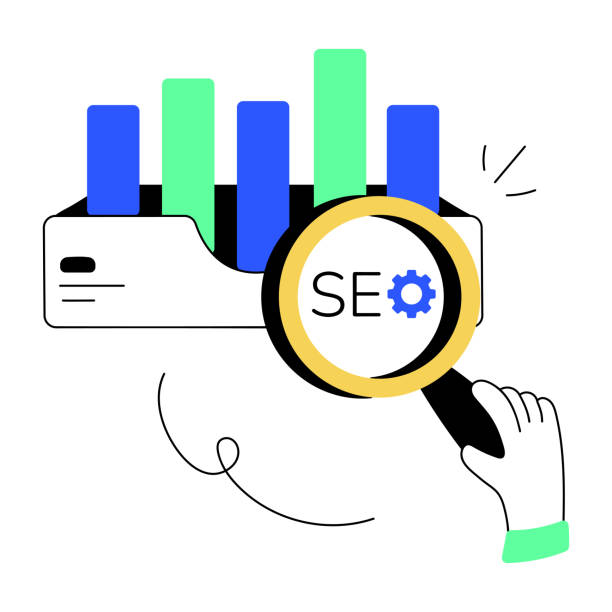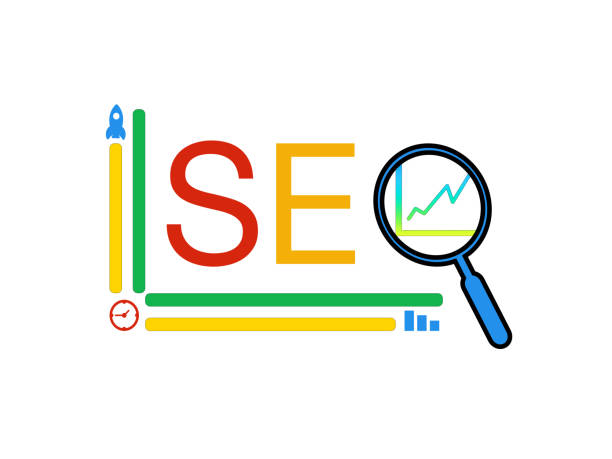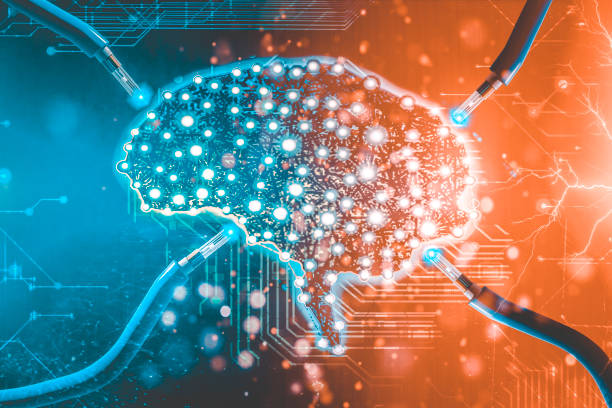What is On-Page SEO and Why Does it Matter?
On-Page SEO, or On-Page SEO, is a set of actions you take within your website to improve your ranking in Google search results and other search engines.
These actions include optimizing content, HTML tags, site structure, and loading speed.
The importance of On-Page SEO is that it helps search engines better understand your site’s content and recognize its relevance to users’ searches.
Without proper On-Page SEO, even the best content may be hidden on the lower pages of search results.
On-Page SEO plays a fundamental role in the visibility of your website in the online world.
By optimizing various elements of your site, you increase your chances of ranking higher in search results and, as a result, attract more traffic to your site.
This traffic is not only quantitative but also qualitative, because users who enter your site through search are more likely to be looking for information or products that you offer.
In other words, On-Page SEO helps you attract your target audience and increase conversion rates.
On-page SEO can turn your site into one of the best sites in your field.
In fact, On-Page SEO is the foundation for your overall SEO strategy.
Without a strong foundation in On-Page SEO, your efforts in Off-Page SEO and link building will not achieve the desired results.
On-Page SEO is like the skeleton of a building that guarantees its strength and stability.
You should take on-page SEO seriously to optimize your site.
Research shows that 80% of customers trust companies with professional websites more. Does your current site inspire this trust?
With Rasaweb’s corporate website design services, solve the problem of customer mistrust and weak online image forever!
✅ Create a professional image and increase customer confidence
✅ Attract more sales leads and grow your business
⚡ Get a free consultation
Keyword Research and its Role in On-Page SEO
#Keyword_research is the cornerstone of any successful On-Page SEO strategy.
Before you start writing content or optimizing your pages, you need to know what words and phrases your target audience is using to search.
There are various tools for keyword research, including Google Keyword Planner, Ahrefs, and SEMrush.
These tools help you find keywords related to your business, estimate their search volume, and assess the level of competition.
After this research, you must use the keywords correctly.
When choosing keywords, look for a combination of head keywords and long-tail keywords.
Head keywords are general and popular words that have a high search volume, but competition is also very intense.
Long-tail keywords are specific and precise phrases that have lower search volume, but competition is also less, and the probability of attracting a more targeted audience is higher.
To succeed in your site’s On-Page SEO, do not forget long-tail keywords.
For example, instead of focusing solely on the keyword “shoes,” try using the long-tail keyword “buy men’s sports shoes for running.”
After identifying the right keywords, you need to use them naturally and strategically in your content.
Avoid excessive use of keywords (keyword stuffing), as this can harm your site’s ranking.
Instead, try using keywords in the page title, meta description, subheadings, body text, and alt tags for images.
Leave keyword optimization to On-Page SEO professionals.
Content Optimization for On-Page SEO
Content is the king of On-Page SEO.
High-quality, valuable, and relevant content not only attracts users but also captivates search engines.
When creating content, keep these points in mind:
Write your content for your target audience.
Your content should answer their questions and needs and provide valuable information.
For this purpose, use language that is understandable to your audience and avoid excessive technical jargon.
Optimizing content for search engines and users is an important point in On-Page SEO.
Structure your content.
Use subheadings, lists, and short paragraphs to organize your content and make it easier to read.
A logical structure helps search engines better understand your content and display it in search results.
Try to use this point in the On-Page SEO of your site’s pages.
Use images and videos.
Images and videos can make your content more engaging and help users better understand the information.
Make sure to optimize your images and videos using appropriate alt tags.
Update your content regularly.
Search engines are interested in new and updated content.
By updating your old content, you can improve your site’s ranking in search results.
Quality content is one of the essential pillars of On-Page SEO.
Click here to preview your posts with PRO themes ››
HTML Tag Optimization for On-Page SEO
HTML tags provide important information about the content of the page to search engines.
By optimizing HTML tags, you can help search engines better understand your site’s content and display it in search results.
The title tag, description tag, and heading tags have a great impact on the site’s On-Page SEO.
The title tag is one of the most important HTML tags.
The title tag displays the page title in search results and in the browser tab.
The title tag should be attractive, relevant, and include the main keyword.
The length of the title tag should not exceed 60 characters.
Take tag optimization in On-Page SEO seriously.
The meta description tag provides a short summary of the page content.
The meta description tag is displayed below the page title in search results.
The meta description tag should be attractive, relevant, and persuasive, encouraging users to click on your link.
The length of the meta description tag should not exceed 160 characters.
With proper descriptions, you can attract users, and this is a plus in On-Page SEO.
Heading tags specify the structure of the content and help search engines understand the content hierarchy.
Use H1 to H6 tags for main and subheadings.
The H1 tag should be used for the main title of the page and include the main keyword.
Try to use heading tags in your text to improve your site’s On-Page SEO.
Tired of losing customers due to poor online store design? Solve this problem forever with Rasaweb!
✅ Increase sales and visitor-to-customer conversion rates
✅ Smooth and engaging user experience for your customers⚡ Get a free consultation
Improving Site Structure and Navigation for On-Page SEO
Site structure and navigation play an important role in user experience (UX) and On-Page SEO.
A logical and organized site structure helps users and search engines easily navigate your site and find the content they are looking for.
By doing this, you can keep the user on the site longer, and this helps to improve your site’s On-Page SEO.
A good site structure should be hierarchical.
More important pages should be at a higher level of the structure, and less important pages should be at a lower level.
This helps search engines understand the importance of different pages on your site and rank them correctly.
Help search engines properly index your site’s pages to have better On-Page SEO.
Your site’s navigation should be clear and easy.
Users should be able to easily move from one page to another and find the content they are looking for.
Use main and submenus, internal links, and breadcrumbs to improve your site’s navigation.
Internal links to other pages help improve your site’s ranking in On-Page SEO.
This improves the user experience.
Use clear and descriptive URLs.
Your page URLs should be short, relevant, and include keywords.
Avoid using long and complex URLs that contain meaningless numbers and letters.
Proper and relevant URLs are an important factor in On-Page SEO.
Optimizing Site Loading Speed for On-Page SEO
Site loading speed is an important factor in user experience and On-Page SEO.
Users expect a website to load within a few seconds.
If your site is slow, users may leave the site and visit another site.
By increasing the speed of the site, you can reduce the bounce rate, which is an important factor in On-Page SEO.
Search engines also pay attention to site loading speed.
Google has announced that site loading speed is a ranking factor.
Sites that load faster rank better in search results.
So, if you care about your site’s On-Page SEO, you should also take site loading speed seriously.
To improve your site’s loading speed, you can take various measures, including:
Optimizing images.
Large images can slow down site loading speed.
Compress your images before uploading them to the site using image optimization tools.
Use an optimized content management system (CMS).
Some content management systems, such as WordPress, offer various plugins that can improve site loading speed.
Use a content delivery network (CDN).
CDN stores your site’s content on different servers around the world.
When a user visits your site, the content is delivered from the server closest to them, which increases the site’s loading speed.
Click here to preview your posts with PRO themes ››
Using suitable hosting also has a great impact on site speed.
Image Optimization for On-Page SEO
Images are an important part of website content and can improve the user experience.
By optimizing images, you can help search engines understand your images and display them in image search results.
By optimizing images, you can bring more traffic to your site from Google’s image section, and this has a positive impact on On-Page SEO.
Use descriptive file names for your images.
Image file names should be short, relevant, and include keywords.
For example, instead of using the file name “IMG_1234.jpg,” use the file name “men’s-sports-shoes.jpg.”
Try to choose relevant names for images to help the site’s On-Page SEO.
Use alt tags for your images.
The alt tag provides an alternative text for the image that is displayed if the image does not load.
The alt tag is also used by search engines to understand the content of the image.
The ALT tag describes your image in search engines.
The alt tag should be short, relevant, and include keywords.
Using the alt tag is very important in On-Page SEO.
Internal Linking and Its Importance in On-Page SEO
Internal linking refers to the process of creating links between different pages of a website.
Internal linking helps users and search engines easily navigate your site and find the content they are looking for.
Internal links on the site help improve your site’s ranking.
Internal linking can help improve your site’s ranking in search results.
When you link to a page on your site from other pages, you show search engines that this page is important.
Improve your site’s ranking by creating targeted internal links and help the site’s On-Page SEO.
Internal linking can help increase your site’s traffic.
When users click on internal links, they are directed to other pages on your site, which increases the time users spend on the site and reduces the bounce rate.
Creating relevant links on the site can also help the site pages to be indexed faster.
When internal linking, keep these points in mind:
Use descriptive anchor text.
The anchor text should clearly indicate what page the user will be directed to by clicking on the link.
Link to relevant pages.
Links should link to pages that are relevant to the content of the current page.
Use nofollow links to link to pages that you do not want to increase their ranking.
Nofollow links do not have a specific impact on On-Page SEO and are mostly used for outbound links.
Is your company’s website as professional and trustworthy as it should be? Create an online presence that reflects your credibility and attracts more customers with specialized corporate website design by Rasaweb.
✅ Build a powerful and professional image of your brand
✅ Convert visitors into real customers
⚡ Get a free consultation right now!
Mobile SEO and Its Impact on On-Page SEO
With the increasing use of mobile devices to search the Internet, Mobile SEO has become an important factor in On-Page SEO.
If your website is not optimized for mobile devices, you may lose your ranking in search results.
The site design should be such that it is displayed correctly on mobile as well.
This is one of the most important principles of Mobile SEO.
Make sure your website is responsive.
A responsive website automatically adjusts to the screen size of the user’s device.
This ensures that your website displays well on all devices, including mobile phones, tablets, and desktop computers.
Optimize your site’s loading speed for mobile devices.
Mobile users expect websites to load quickly.
To improve your site’s loading speed on mobile devices, you can use Google’s PageSpeed Insights tool.
By speeding up the site, you can improve your ranking in On-Page SEO.
Use large and readable fonts.
Small fonts make it difficult to read content on mobile devices.
Use large and readable fonts so that users can easily read the content of your site.
Analyzing and Measuring On-Page SEO Results
Analyzing and measuring On-Page SEO results is essential to understand the effectiveness of your efforts and identify opportunities for improvement.
By using web analytics tools, you can track your site’s traffic, monitor user behavior, and check your keyword rankings.
This information helps you make more informed decisions about your On-Page SEO strategy.
Data analysis helps you identify your strengths and weaknesses in On-Page SEO.
Click here to preview your posts with PRO themes ››
Use Google Analytics to track your site’s traffic.
Google Analytics is a free tool that provides detailed information about your site’s traffic.
With Google Analytics, you can find out where users are coming from to your site, what pages they are visiting, and how long they are staying on your site.
Use Google Search Console to check your keyword rankings.
Google Search Console is a free tool that provides information about your keyword rankings in search results.
With Google Search Console, you can find out what keywords your site is ranking for and how you can improve your ranking for these keywords.
With the correct analysis of data, you can have the best performance in your site’s On-Page SEO.
Frequently Asked Questions
| Question | Answer |
|---|---|
| What is On-page SEO? | On-page SEO refers to the set of actions taken within a website and on the content of pages to achieve a better ranking in search results. |
| Why is On-page SEO important for a website? | On-page SEO helps search engines better understand the content of your page and assess its importance. It also provides a better user experience for visitors. |
| What are the most important on-page SEO factors? | The most important factors include keyword optimization, content quality, Title Tag, Meta Description, URL structure, Heading tags (H1-H6), internal linking, and image optimization. |
| What role does the Title Tag play in on-page SEO? | The Title Tag is one of the most important on-page SEO factors, which displays the title of your page in search results and browser tabs. It should include the main keyword and be attractive. |
| What is the importance of Meta Description in on-page SEO? | The Meta Description provides a summary of the page’s content, and although it does not directly affect rankings, it can increase the click-through rate (CTR) by encouraging users to click. |
| How is a keyword used in on-page SEO? | Keywords are phrases that users use to search for information in search engines. Appropriate and natural use of them in content helps the search engine to understand the topic of the page. |
| What is internal linking and what are its benefits in on-page SEO? | Internal linking means creating links between different pages of a website. This helps to distribute page authority, helps search bots crawl, and improves user experience. |
| How does image optimization affect on-page SEO? | Image optimization includes compressing the volume, using appropriate Alt tags, and properly naming the files. This improves the page loading speed and helps search engines understand the content of the image. |
| What does quality content mean in on-page SEO? | Quality content means content that is comprehensive, accurate, unique, up-to-date, and user-friendly and meets the needs of users. |
| What role does URL structure play in on-page SEO? | Readable, short URLs that include the main keyword help search engines and users to better understand the content of the page and improve the user experience. |
And other services of Rasa Web advertising agency in the field of advertising
Smart advertising campaign: A combination of creativity and technology to increase click-through rates through proprietary programming.
Smart Conversion Rate Optimization: An exclusive service to grow customer acquisition based on precise audience targeting.
Smart Reportage: An exclusive service to grow website visits based on proprietary programming.
Smart Sales Automation: An exclusive service to grow website visits based on attractive user interface design.
Smart UI/UX: A combination of creativity and technology to improve SEO ranking through proprietary programming.
And more than hundreds of other services in the field of internet advertising, advertising consulting, and organizational solutions
Internet Advertising | Advertising Strategy | Reportage Ads
Resources
On-Page SEO Checklist: All the On-Page SEO Points You Need to Observe
,What is On-Page SEO? A Comprehensive Review of On-Page SEO Techniques and Strategies
,Complete On-Page SEO Tutorial + Complete Checklist
,What is On-Page SEO? Tutorial on How to Optimize a Site on Page Visually
? With Rasaweb Afarin, your business soars in the digital world! From targeted SEO and content production to multilingual website design and advertising campaign management, we are with you every step of your digital growth journey to have a powerful and lasting presence.
📍 Tehran, Mirdamad Street, next to the Central Bank, South Kazerun Alley, Ramin Alley No. 6

